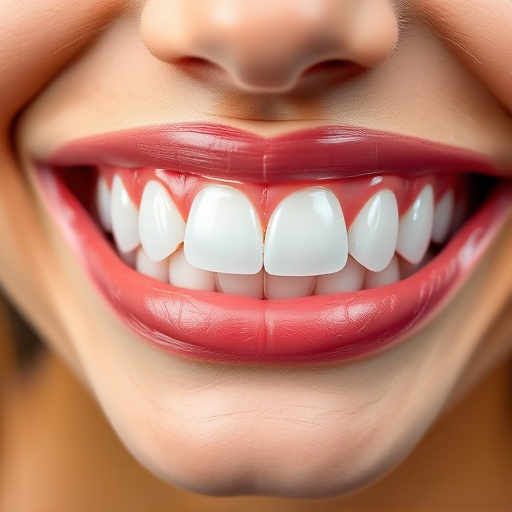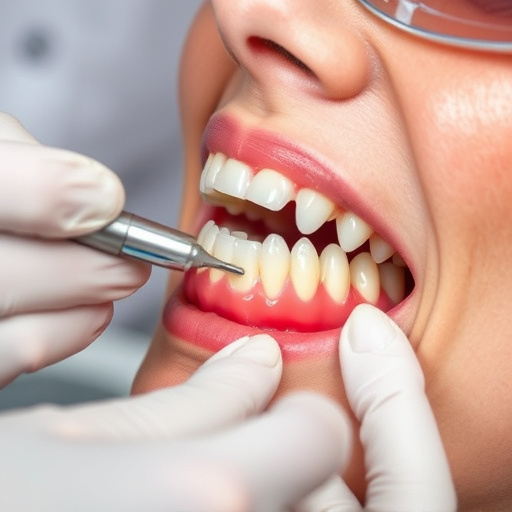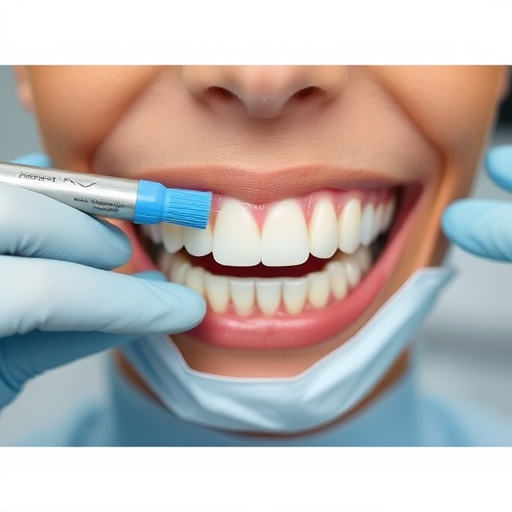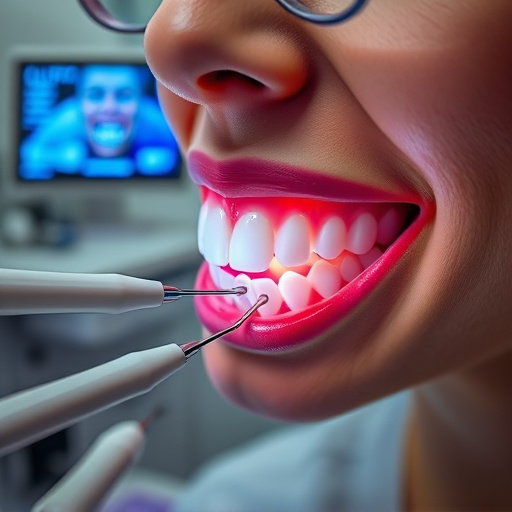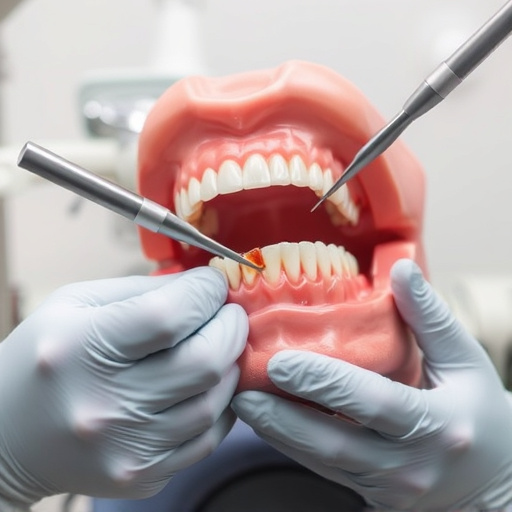Handicap accessible dental practices are essential for providing inclusive oral health care to all patients, including those with diverse disabilities. By training dental teams and creating adapted environments, these practices ensure equal access to quality care, improving overall well-being for underserved individuals. Specialized training covers adapting procedures, understanding communication needs, and using advanced techniques to offer personalized solutions tailored to each patient's unique requirements.
In today’s inclusive world, ensuring handicap accessibility in dentistry is no longer a consideration but a necessity. This article delves into the significance of accommodating special needs patients within dental practices, exploring strategies to train dental teams effectively. We discuss tools and practices that transform dental offices into welcoming spaces for all, fostering a culture where every patient receives compassionate care tailored to their unique requirements. Discover how these initiatives revolutionize dental healthcare, making it more accessible and sensitive to diverse needs.
- Understanding the Importance of Handicap Accessibility in Dentistry
- Training Dental Teams for Effective Special Needs Care
- Creating Inclusivity: Tools and Practices for Handicap Accessible Dental Offices
Understanding the Importance of Handicap Accessibility in Dentistry
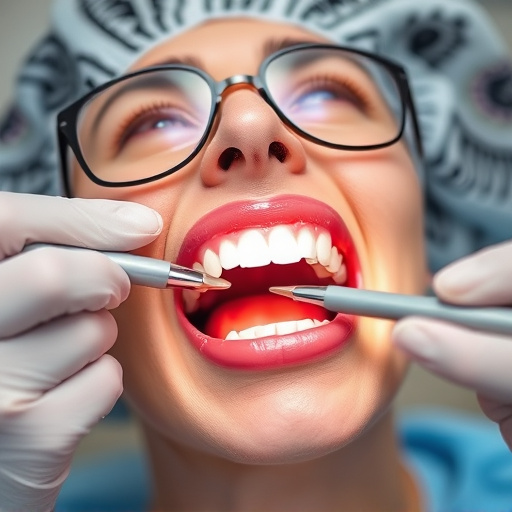
In the realm of healthcare, ensuring accessibility for all is paramount, especially within specialized fields like dentistry. Handicap accessible dental practices are not merely a moral imperative but a legal requirement, aiming to provide comprehensive dental care to patients with diverse abilities. By training dental teams to cater to special needs, we significantly enhance oral health outcomes and overall well-being for this often underserved population.
This approach involves creating inclusive environments that accommodate various disabilities, from physical limitations requiring specialized equipment to sensory sensitivities necessitating adapted communication methods. Offering services like dental cleanings and even innovative treatments such as clear aligners tailored to these needs ensures folks with special requirements can access quality care without barriers. Such initiatives not only promote equal opportunities for oral health management but also foster a sense of dignity and independence among individuals with disabilities.
Training Dental Teams for Effective Special Needs Care

Training Dental Teams for Effective Special Needs Care
In the pursuit of providing inclusive and quality dental care to all patients, including those with special needs, it is imperative that dental teams undergo specialized training. This training equips them with the knowledge and skills required to cater to a diverse range of requirements, from adapting standard procedures for handicap accessible dental services to understanding the unique communication needs of various patient profiles. By integrating these practices into their routines, dental professionals can ensure comfort and accessibility during routine oral exams, preventive dentistry, and other essential treatments.
Such training emphasizes the importance of patience, adaptability, and empathy in managing dental appointments for special needs individuals. It includes techniques for effective communication, understanding behavioral nuances, and tailoring care plans to meet specific challenges. Moreover, it covers advanced procedures like dental bonding, which can be particularly beneficial for patients with unique physical or sensory requirements. Through these comprehensive initiatives, handicap accessible dental teams are better prepared to deliver compassionate, efficient, and personalized oral health solutions tailored to each patient’s distinct needs.
Creating Inclusivity: Tools and Practices for Handicap Accessible Dental Offices
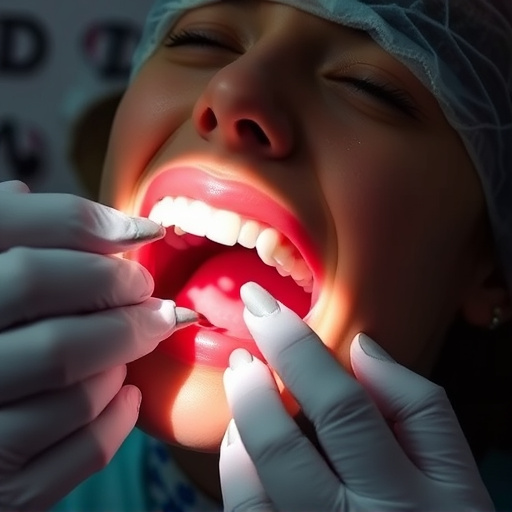
Creating an inclusive environment is paramount in modern healthcare, especially within handicap accessible dental offices. These practices go beyond physical accessibility to include sensory considerations and specialized training for dental teams. For instance, implementing low-glare lighting, quiet spaces, and simplified language can significantly enhance comfort for patients with various disabilities. Additionally, dental professionals should be trained in adaptive communication techniques, enabling them to cater to the unique needs of autistic patients or those with speech impairments.
The integration of adaptable tools further fosters inclusivity. Equipment like adjustable chairs, specialized instruments for limited mobility, and even digital solutions for visual impairment demonstrates a commitment to providing quality care to all. Moreover, offering emergency dental care tailored for special needs patients ensures timely treatment without adding to the stress often associated with medical emergencies. Similarly, procedures such as dental bonding can be adapted to suit specific requirements, ensuring comfort and satisfaction across diverse patient profiles, including those who prefer less invasive treatments, aligning with the principles of family dentistry.
Handicap accessible dental care is not just a moral imperative, but also a crucial aspect of ensuring equitable access to oral health services. By training dental teams in special needs care and implementing inclusive practices, we can create environments that are welcoming and supportive for all patients. These efforts not only enhance patient experiences but also contribute to a more diverse and compassionate dental community. For those seeking to provide handicap accessible dental services, the tools and practices outlined in this article serve as valuable resources for creating inclusive, caring spaces.





